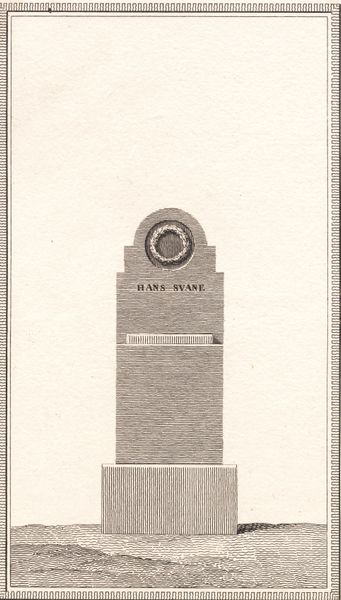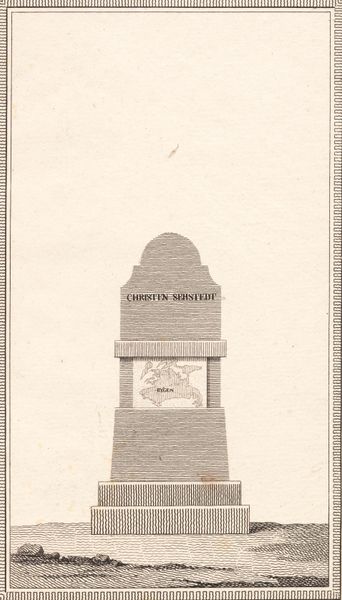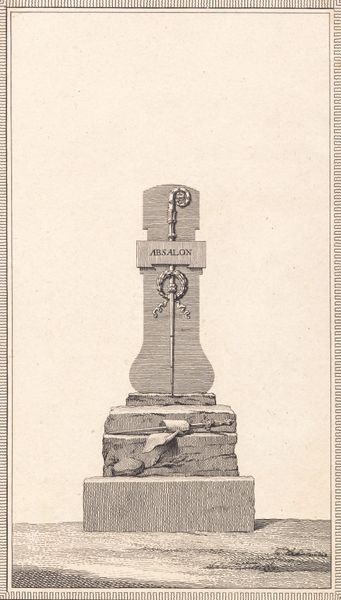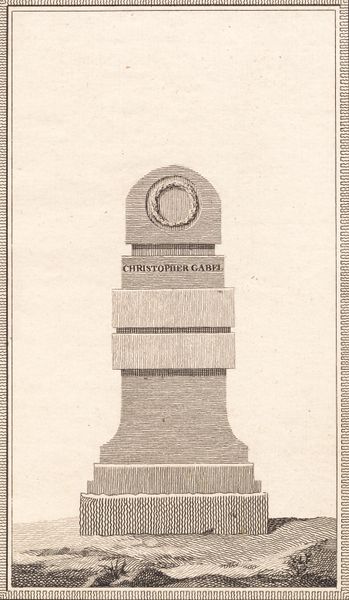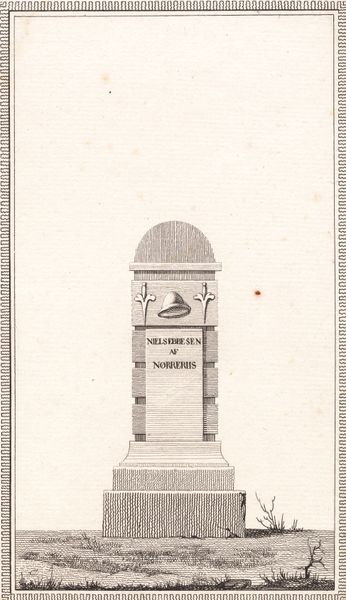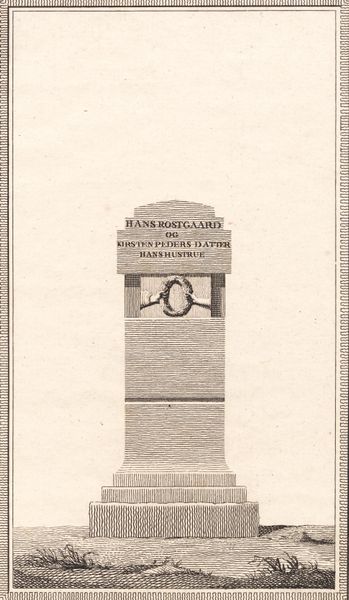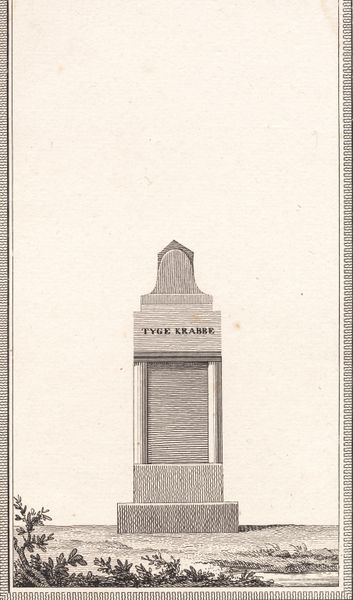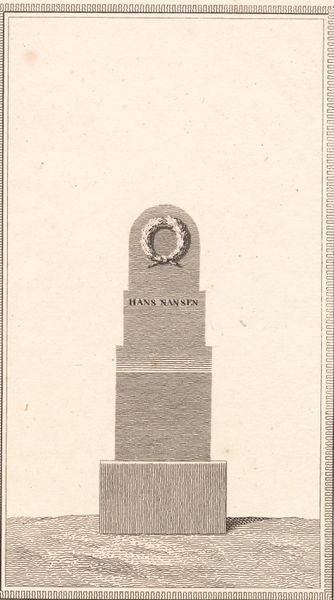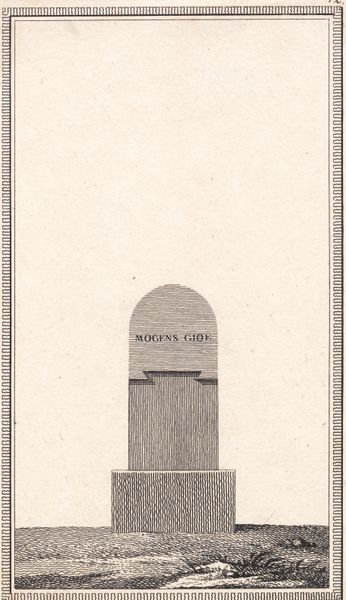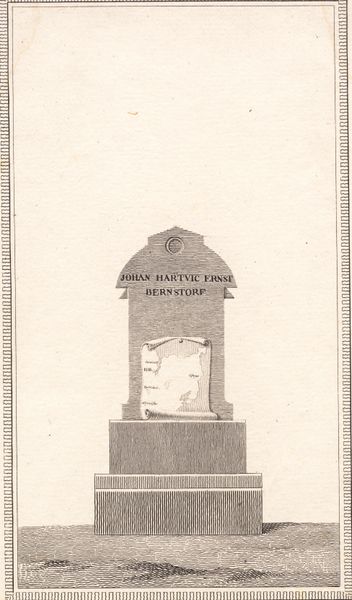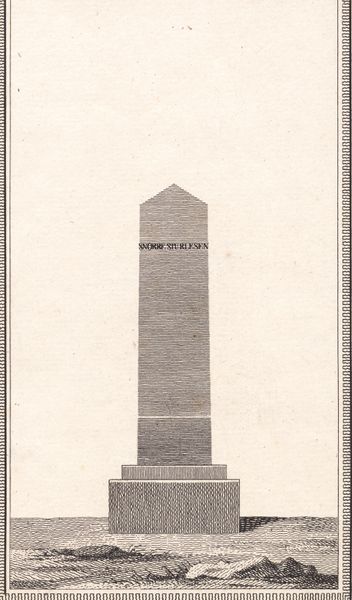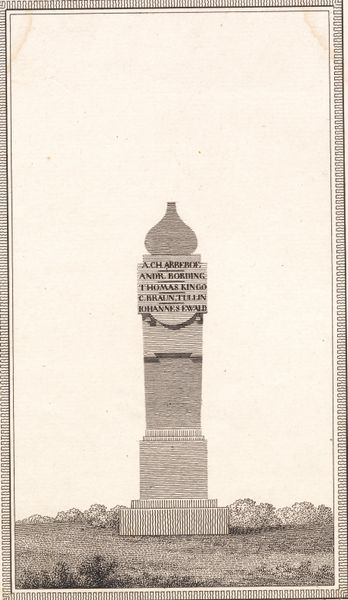
print, etching, engraving
#
portrait
#
neoclacissism
# print
#
etching
#
old engraving style
#
landscape
#
historical fashion
#
engraving
#
miniature
Dimensions: 179 mm (height) x 103 mm (width) (billedmaal)
Editor: So, here we have "Hans Schack," an etching and engraving by J.F. Clemens, dating from 1779 to 1781. It feels austere and monumental, despite its miniature scale. What’s your take on this imposing little print? Curator: This print reveals a lot about the period’s fascination with commemorating individuals, particularly within a neoclassical framework. Notice the stark monument, the classical font of the inscription, and the wreath. It's clearly referencing historical precedents, perhaps Roman funerary markers. Who do you think the audience for such a print would have been? Editor: Maybe family or fellow military men, since I think Hans Schack was a military figure. A way to keep his memory alive? Curator: Precisely. These prints functioned as both mementos and statements. The monument is devoid of overt religious symbolism, reflecting the Enlightenment emphasis on reason and civic virtue. It’s a public declaration, an attempt to solidify Schack's legacy within a particular ideological context. Look at the precision of the line work - how does that impact the work's reception? Editor: The fine lines do give it that formal, almost architectural feel, lending more weight to the commemoration aspect. Less about personal grief and more about... public remembrance? Curator: Exactly! It emphasizes the controlled, rational presentation of grief, fitting with the neoclassical aesthetic's focus on order and idealized forms. The politics of imagery at play are worth considering – who gets remembered, and how? This print actively shapes Schack’s historical narrative. Editor: It’s interesting how a seemingly simple image can reveal so much about cultural values and how society chooses to memorialize people. I’d initially missed so much of the context. Curator: These objects carry encoded cultural values; unpacking those codes allows us to understand how the past perceived itself, and how it wished to be perceived. Editor: This was incredibly enlightening! I’ll definitely look at commemorative art differently from now on, especially thinking about who and what is left out of the story.
Comments
No comments
Be the first to comment and join the conversation on the ultimate creative platform.

